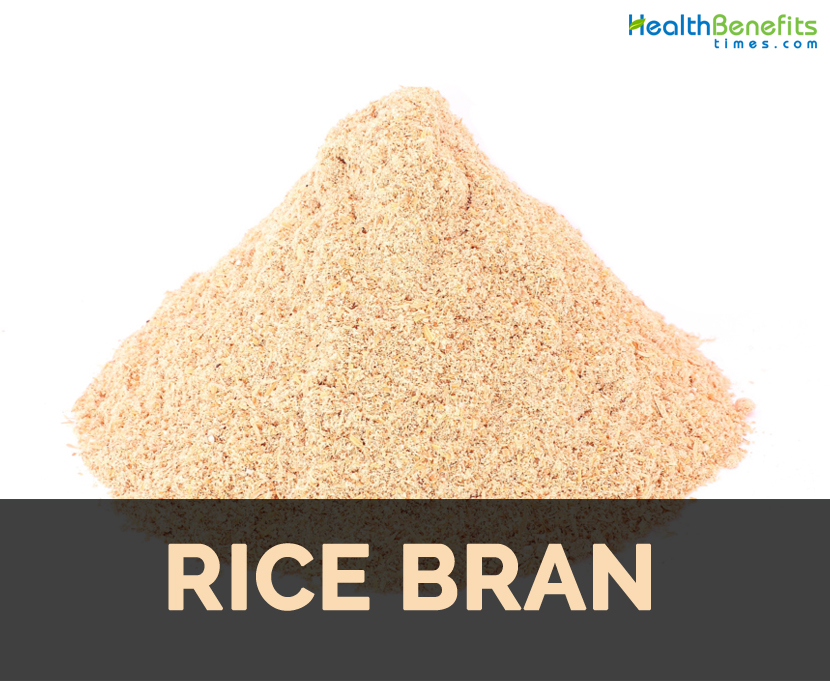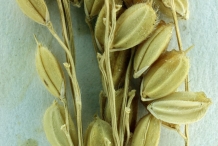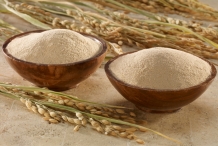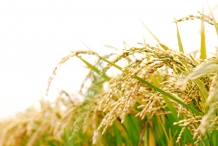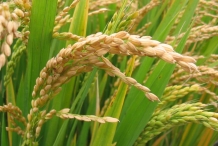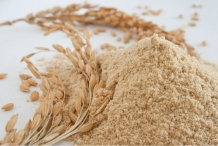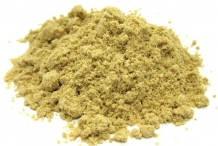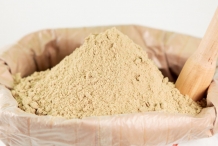Rice bran is the hard outer layers of cereal grain which consists of combined aleurone as well as pericarp. It is an essential part of whole grains which is produced as byproduct of milling in producing refined grains. When bran is expelled from grains, it loses a part of its nutritional value. Bran has high content of dietary fiber, essential fatty acids and other vital amounts of protein, starch, dietary minerals and vitamins. Being a great source of phytic acid which is an antinutrient, it prevents absorption of nutrients. It offers wide range of health benefits with the presence of vitamin E, antioxidants, vitamin B and essential fatty acids. It is a great source of phytosterols which helps to control blood sugar, cholesterol metabolism and prostate health. Naturally it is gluten free, lactose free and hypoallergenic which makes it tolerable health product for various tastes.
Traditional uses
- Apply rice bran oil topically for improving circulation and lower the appearance of dark circles and puffiness around eyes.
- It is helpful to prevent skin conditions such as eczema.
- It helps to repair damage, dryness and brittleness.
- Apply the oil directly to wounds for speeding up healing process.
- Rice bran is used for treating cardiovascular diseases.
- It helps to lower the formation of kidney stones.
Precautions
- High intake of bran causes unpredictable bowel movements, stomach discomfort and intestinal gas.
- Rice bran when added to baths causes skin redness and itching.
- Use it in moderate amounts.
- The people with digestive problems such as adhesions, intestinal ulcers, slow digestion, and blockage of digestive tract should not use rice bran.
- It provides relief from unwanted constipation by promoting the functions of digestive tract, eliminating toxins and boost metabolism.
How to Eat
- In Japan, it is used for pickling.
- In Kitakyushu city, it is used to stew fish such as sardine.
- The oil extracted from rice bran is used for deep frying.
- Rice bran is used in making confectionery products such as snacks, bread, biscuits and cookies.
- Make a rice bran drink by mixing a spoonful of rice bran and 200 ml of milk.
Other Facts
In Myanmar, rice bran is combined with ash and used as a detergent for washing dishes.
References:
https://www.itis.gov/servlet/SingleRpt/SingleRpt?search_topic=TSN&search_value=41976#null
https://en.wikipedia.org/wiki/Bran
https://www.newdirectionsaromatics.com/blog/products/all-about-rice-bran-carrier-oil.html
https://www.rxlist.com/rice_bran-page2/supplements.htm
http://slism.com/diet/rice-bran-diet.html
Comments
| Rice bran Quick Facts | |
|---|---|
| Name: | Rice bran |
| Scientific Name: | Oryza sativa |
| Calories | 373 Kcal./cup |
| Major nutrients | Manganese (729.04%) Vitamin B6 (369.46%) Phosphorus (282.71%) Iron (273.50%) Vitamin B1 (270.75%) |
| Name | Rice bran |
|---|---|
| Scientific Name | Oryza sativa |
| Common/English Name | Asian Rice, Common rice, Cultivated Rice, Paddy, Red rice, Rice |
| Name in Other Languages | Afrikaans: rys; Arabic: al ruzz (أرز), arruzz (الأرز), eruz (رُزّ); Armenian: brinz; Bengali: Bhāta (ভাত); Burmese: saba; Chinese: ya zhou zai pei dao (亚洲栽培稻), dao zi (稻子), mi, shui dao (水稻), zhan nian, zhan dao; Danish: raa ris, uafskallet ris, ris; Dutch: rijst, padie; English: asian rice, cultivated rice, common rice, lowland rice, rice, paddy rice, upland rice; Finnish: raakariisi, kuorimaton riisi, riisi; French: riz, riz commun, riz cargo, riz non décortiqué, riz cultivé, riz paddy, riz de plaine, riz vêtu; German: gemeiner reis, reis, paddy-reis, rohreis; Greek: όρυζα (óryza), όρυζον (óryzon), όρυζα η εδώδιμος (óryza i edódimos), rýzi (ρύζι); Hungarian: hántolatlan rizs; Italian: risone, riso; Japanese: gemmai, hakumai, suitou, raisu, ine (イネ); Malay: padi; Nepalese: dhaan, caamal; Persian: birinj (برنج); Portuguese: arroz, arroz paddy, arroz em casca; Russian: ris (рис); Sanskrit: vrihi; Serbian: pirinač (пиринач); Shona: mupunga; Slovakian: riža; Slovenian: riž; Spanish: arroz, arroz con cáscara asiático, arroz con cáscara, arroz irrigado; Swedish: ris, paddyris; Tagalog: palay; Tamil: pacharisi (பச்ைச அரிசி), risi (அரிசி); Thai: K̄ĥāw (ข้าว); Vietnamese: cây lúa; Javanese: Pari; Sundanese: Pare; Vietnamese: luà nêp, lúa |
| Major Nutritions | Manganese, Mn 16.768 mg (729.04%) Vitamin B6 (Pyridoxine) 4.803 mg (369.46%) Phosphorus, P 1979 mg (282.71%) Iron, Fe 21.88 mg (273.50%) Vitamin B1 (Thiamin) 3.249 mg (270.75%) Vitamin B3 (Niacin) 40.114 mg (250.71%) Magnesium, Mg 922 mg (219.52%) Vitamin B5 (Pantothenic acid) 8.72 mg (174.40%) Copper, Cu 0.859 mg (95.44%)| Total Fat (lipid) 24.6 g (70.29%) |
| Calories in 1 cup (118 gm) | 373 Kcal. |


